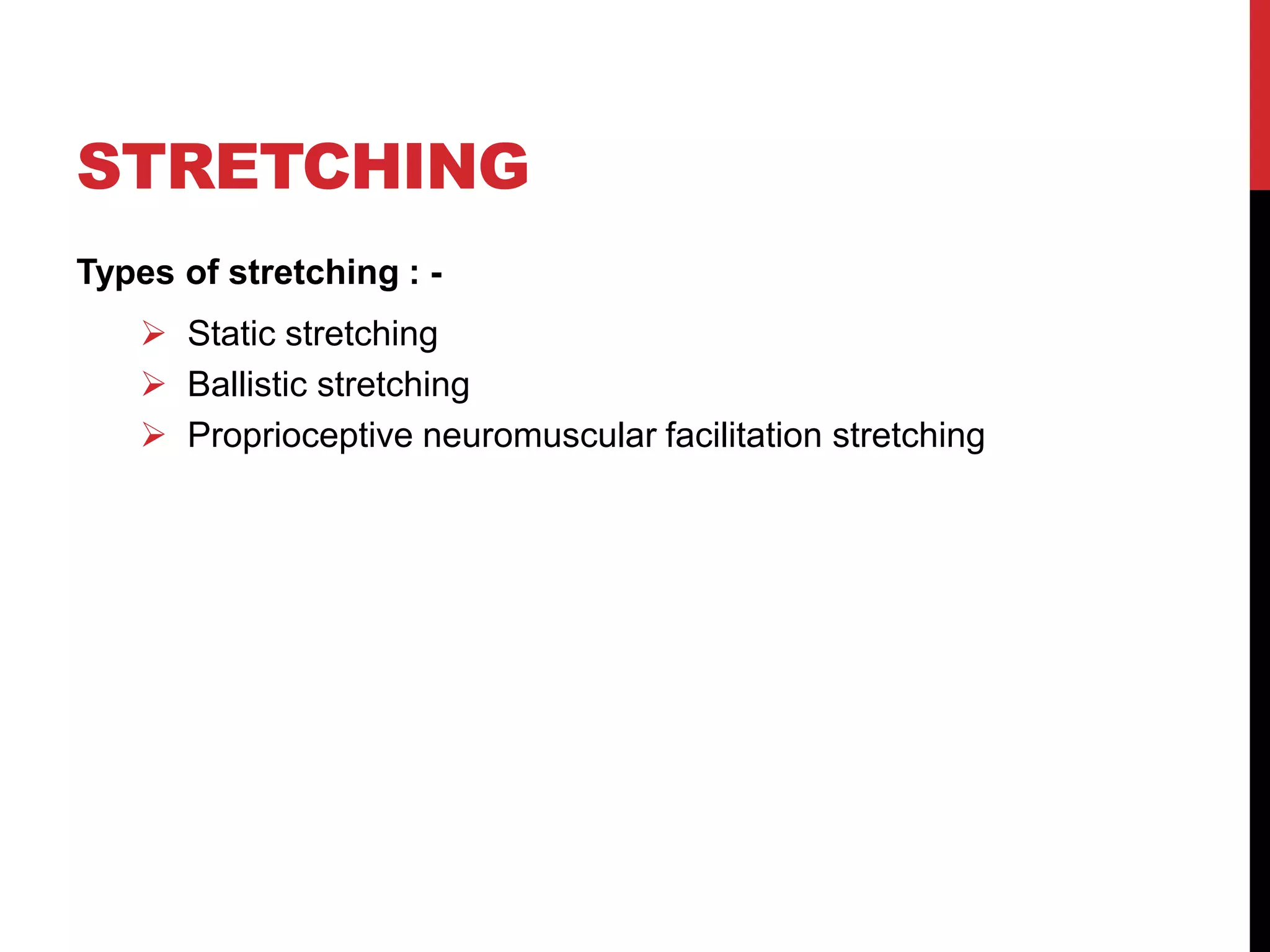This document discusses sports injuries, common types of sports injuries including sprains, strains, shin splints, Achilles tendinitis, fractures, and dislocations. It provides details on treating acute sports injuries with RICE (rest, ice, compression, and elevation) and seeing a physician if needed. Risk factors for sports injuries include intrinsic factors like flexibility and extrinsic factors like environment. Injury prevention strategies discussed are proper warm up, stretching, taping/bracing, use of protective equipment, suitable equipment, managing environmental factors, appropriate training, nutrition, and psychology.






































